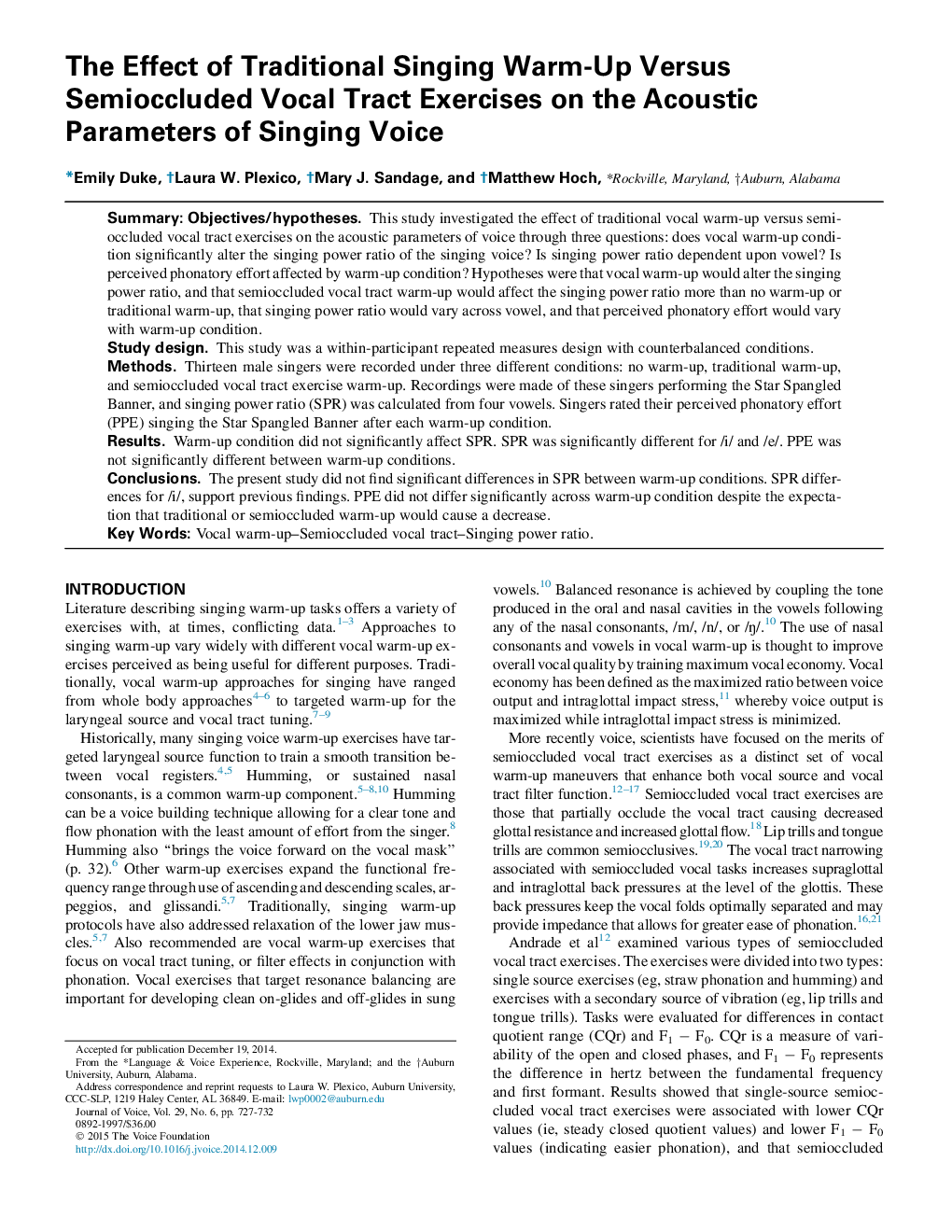| Article ID | Journal | Published Year | Pages | File Type |
|---|---|---|---|---|
| 1101280 | Journal of Voice | 2015 | 6 Pages |
SummaryObjectives/hypothesesThis study investigated the effect of traditional vocal warm-up versus semioccluded vocal tract exercises on the acoustic parameters of voice through three questions: does vocal warm-up condition significantly alter the singing power ratio of the singing voice? Is singing power ratio dependent upon vowel? Is perceived phonatory effort affected by warm-up condition? Hypotheses were that vocal warm-up would alter the singing power ratio, and that semioccluded vocal tract warm-up would affect the singing power ratio more than no warm-up or traditional warm-up, that singing power ratio would vary across vowel, and that perceived phonatory effort would vary with warm-up condition.Study designThis study was a within-participant repeated measures design with counterbalanced conditions.MethodsThirteen male singers were recorded under three different conditions: no warm-up, traditional warm-up, and semioccluded vocal tract exercise warm-up. Recordings were made of these singers performing the Star Spangled Banner, and singing power ratio (SPR) was calculated from four vowels. Singers rated their perceived phonatory effort (PPE) singing the Star Spangled Banner after each warm-up condition.ResultsWarm-up condition did not significantly affect SPR. SPR was significantly different for /i/ and /e/. PPE was not significantly different between warm-up conditions.ConclusionsThe present study did not find significant differences in SPR between warm-up conditions. SPR differences for /i/, support previous findings. PPE did not differ significantly across warm-up condition despite the expectation that traditional or semioccluded warm-up would cause a decrease.
